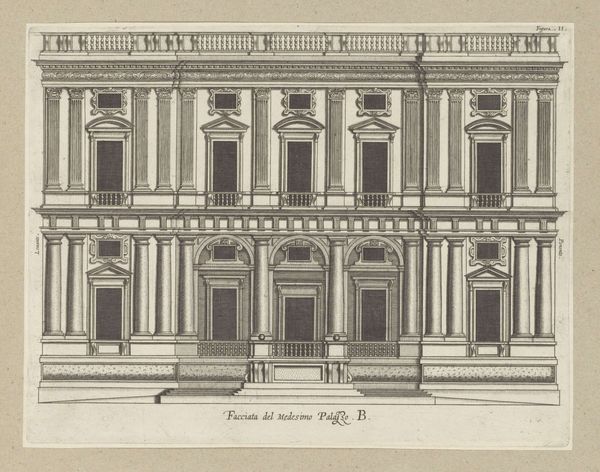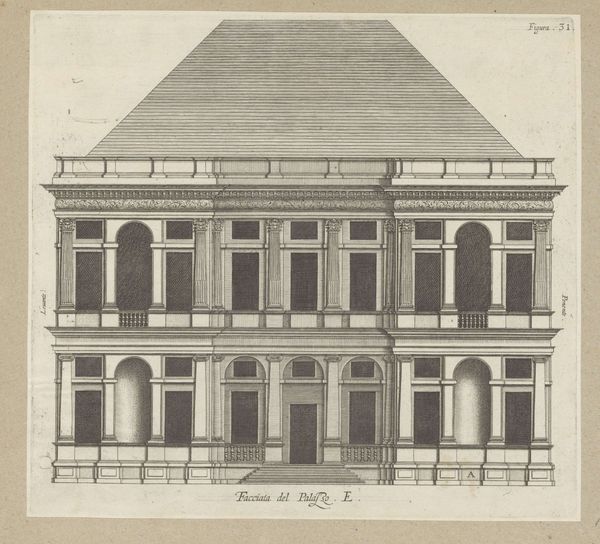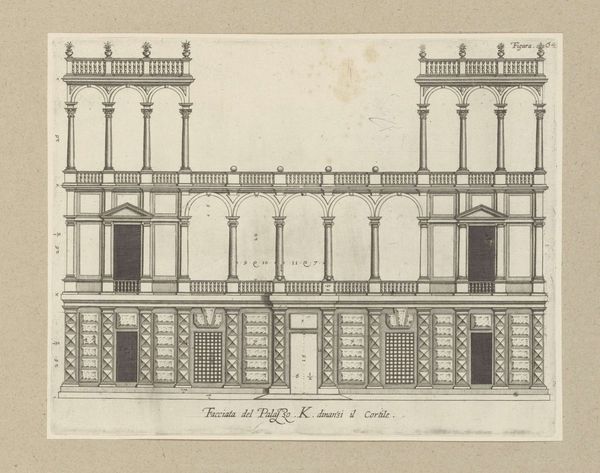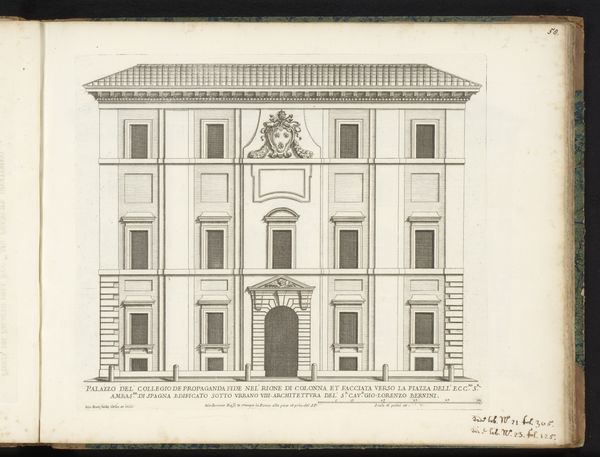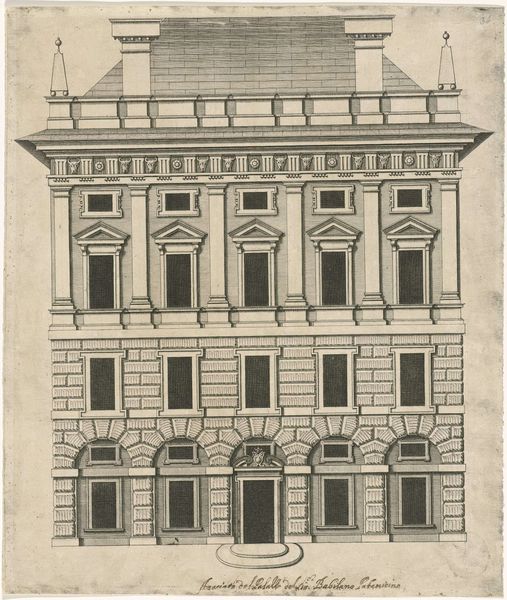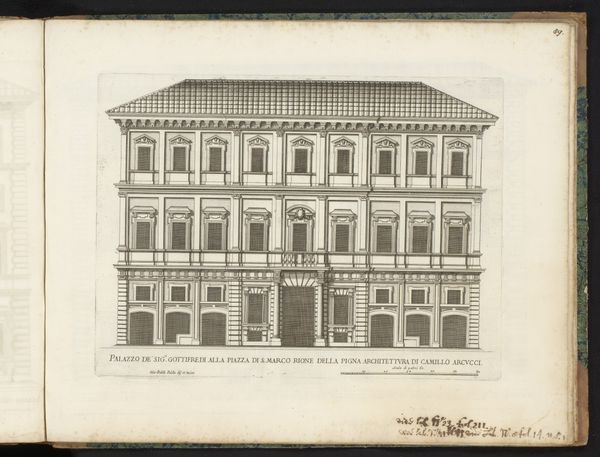
drawing, paper, engraving, architecture
#
drawing
#
baroque
#
paper
#
geometric
#
line
#
cityscape
#
engraving
#
architecture
Dimensions: height 236 mm, width 262 mm, height 583 mm, width 435 mm
Copyright: Rijks Museum: Open Domain
Curator: The artwork before us, residing here at the Rijksmuseum, is Nicolaes Ryckmans’ “Opstand van de façade van het Palazzo Spinola te Genua,” dating back to 1622. Editor: My first impression is that this drawing is surprisingly austere, even cold. It feels almost like an architect's blueprint, concerned with precision and detail rather than evoking the grandeur of the palazzo itself. Curator: Precisely! Ryckmans, during this period, seems invested in conveying symbolic meaning through meticulous representation. Note the stark symmetry; each element mirrored with precision. Consider how this emphasizes order and control. What might that communicate about Genoese power? Editor: I’m drawn to the paper itself, and the lines incised into it to produce this image. Engraving required a specialized artisan, someone intimately familiar with materials, laboring to disseminate this vision of power and wealth. What was the cost of production, the circulation? Who consumed this image, and why? Curator: Indeed. We have to consider circulation! Ryckmans aimed for more than simple documentation. The facade itself becomes a symbol, an embodiment of status and cultural authority that architecture, specifically baroque architecture, projects. The symmetry reflects divine order. Editor: Yet it's also a façade in a literal sense: a mask, an impression carefully crafted. The Spinola family's wealth, visibly displayed through material means, becomes a consumable item as people purchased prints like these. Curator: Yes, and that elevation to symbolism requires the artistic hand, the deliberate rendering of lines and forms to trigger recognition, association. It's not just a building, but a statement. Editor: And that statement, though grand, is also inherently tied to the tangible resources and labor invested in its creation, both the actual Palazzo in Genoa and this engraving of its facade. The architecture embodies a certain set of production relations. Curator: Considering this work now, I am even more struck by the dual layering of symbolic communication embedded within this facade. It’s architecture but it is much more than architecture in its own right. Editor: I think, when looking closer, we are not so different in how we consider these objects in time, the architectural elements of how it’s used, and how they resonate with social and political contexts that made all of it possible in the first place.
Comments
No comments
Be the first to comment and join the conversation on the ultimate creative platform.


